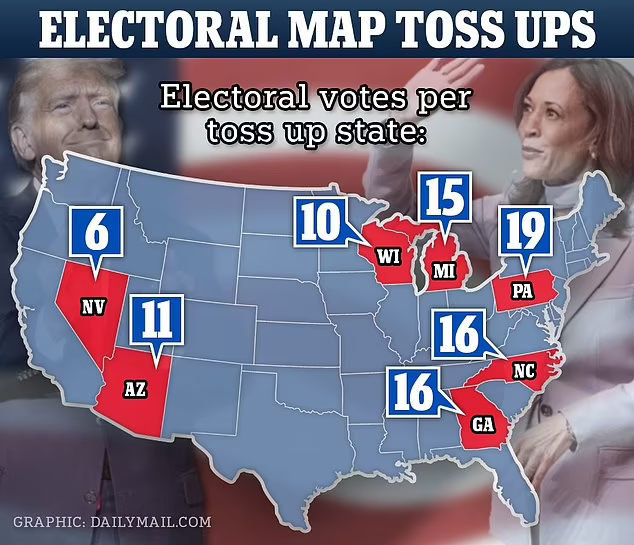What is “electoral college” in the US presidential election?
There are only three days left until the 2024 US presidential election; An election in which the elected president may not win the highest number of popular votes in the country because the “Electoral College” system determines the final winner of this competition, but where did this electoral system come from and how does it work?
According to Isna, the 2024 presidential election of the United States will be held on Tuesday, November 5th (November 15) between Donald Trump, the candidate of the Republican Party, and Kamala Harris, the candidate of the Democratic Party. and foreigners of this country have encountered.
One of the important points in the US elections is that the elected president may not win the most popular votes in the country because after the American people’s vote, it is the states and the “Electoral College” system that declares the final winner, but this system And it has its own work, and according to that count, the president will be determined.
How the “Electoral College” system works
The word “college” refers to the people who are responsible for voting by the states, and they are called “electors”. It should be noted that this system is only used to elect the president, but the results of other American elections are determined by direct voting of the people.
America has 50 states, and each of them, which separately determines the fate of the elected president, has a certain number of electoral votes, and various factors, including the public, have determined this amount of electoral votes for the states.
In general, there are 538 electoral votes in the United States, and among them, the state of California, which is a Democrat (blue), has the most electoral votes, 54, and the states of North Dakota, South Dakota, Alaska, Delaware, Vermont and Wyoming have The minimum number of electoral votes is three numbers each.
This is the total number of representatives of the US House of Representatives plus the senators of the Senate, but the remaining three votes belong to the capital, Washington DC, which is not in any state. Finally, the candidate who wins this election must get at least 270 electoral votes, but how?
Early Voting in North Carolina – October 17
According to the Daily Mail, voters will go to the polls on Tuesday to vote for their favorite candidate. Whichever candidate receives more votes in each state, the total electoral votes of that state will be allocated to that candidate.
For example, in the 2016 presidential election, former US President Donald Trump received fewer popular votes than former US Secretary of State Hillary Clinton, but he won in states that had a high number of electoral votes and therefore was elected president. It was introduced that year.
Also, in 2000, “George W. Bush” won almost half a million less popular votes than his democratic rival “Al Gore”, but this former American president from the Republican Party won 271 electoral votes that year and as a result He became the president of the United States.
Only three other presidents have been elected without a majority of the popular vote under this triumphant system, all in the 19th century; An electoral system where people simply vote for candidates to win states, and after the people vote, it is the number of electoral votes in each state that determines the final winner.
The United States has 2 main parties: the left-leaning Democratic Party in blue (symbolized by the donkey) and the conservative Republicans in red (symbolized by the elephant). Many states are considered completely blue and completely red due to the large number of supporters of one party.
The states of California, New York, and Connecticut usually vote for Democrats, but West Virginia, Alabama, and Idaho often vote Republican.
The candidates of both parties know the majority vote of their supporters states and usually do not hold election rally in them. Instead, they focus on what are known as “key states,” where the vote can swing in favor of one party at a time.
In recent days, most of the election polls have focused on the key American states and the eyes have been fixed on the results of these states and their electoral votes.

Number of electoral votes in key states
Taking into account the most electoral votes in these states that do not have a clear party orientation, we can first go to the state of Pennsylvania with 19 electoral votes, then the states of Georgia and North Carolina with 16 electoral votes, the state of Michigan with 15 electoral votes, and the state of Arizona with 11 electoral votes. State of Wisconsin with 10 and then state of Nevada with the lowest number of 6 electoral votes.
For example, if “Donald Trump” or “Kamala Harris” receive a certain number of votes in the 2024 presidential election, the number of votes will not affect their final victory, but the number of electoral votes they get in each state will be decisive for them, which Of these seven key states, Pennsylvania is the most important with 19 electoral votes.
Is the equality of electoral votes of candidates possible?
This happened only once in 1824, when the Electoral College votes were split between four candidates and none of them managed to win a majority. However, considering the current state of the Republican and Democratic parties and the presence of the two main candidates, such a scenario is not likely to happen at the moment.
However, if no candidate receives a majority of the electoral votes, the United States House of Representatives will vote to elect the president.
Where did the Electoral College system come from?
When the U.S. Constitution was drafted in 1787, the country’s founders struggled to find a way to elect the president because they were concerned that either the president would gain too much power, or that the majority would not necessarily choose the right candidate. Also, it was almost impossible to hold a nationwide vote to elect the president due to the size of the country and the lack of reliable communication methods. For this reason, the framers of the Constitution created the “Electoral College” system.

Signing of the United States Constitution in 1787
This system was popular in southern states where slaves made up a large portion of the population because slaves did not have the right to vote but were considered part of the population, giving the southern states a lot of influence.
Currently, the “Electoral College” system has advantages and disadvantages. For example, smaller states remain important to candidates, and candidates do not need to travel across the country and can simply focus on key states. But under this system, the winner of the popular vote may lose the election, and in this regard, some voters feel that their vote has no effect.
end of message
News>RCO NEWS
RCO


















